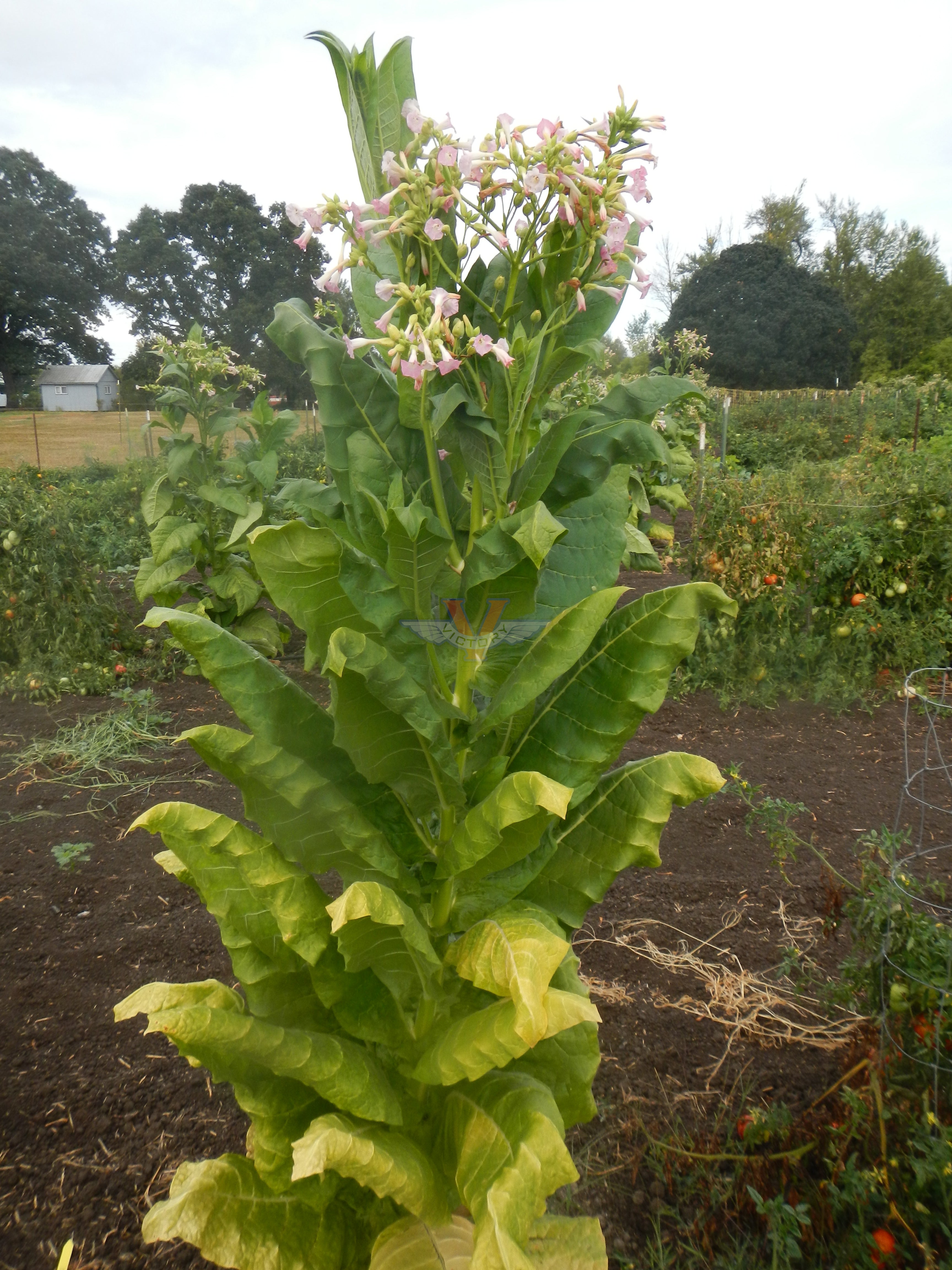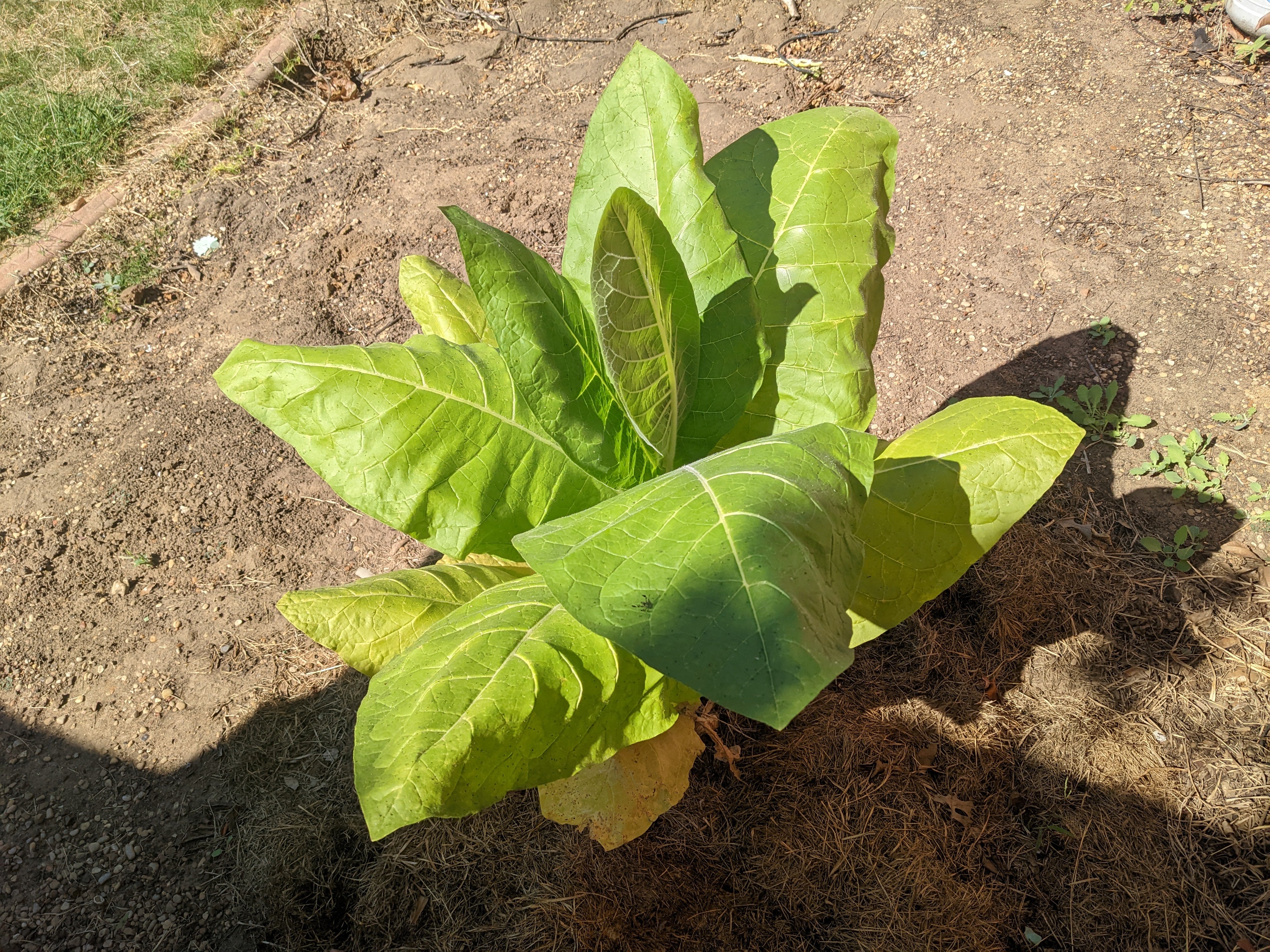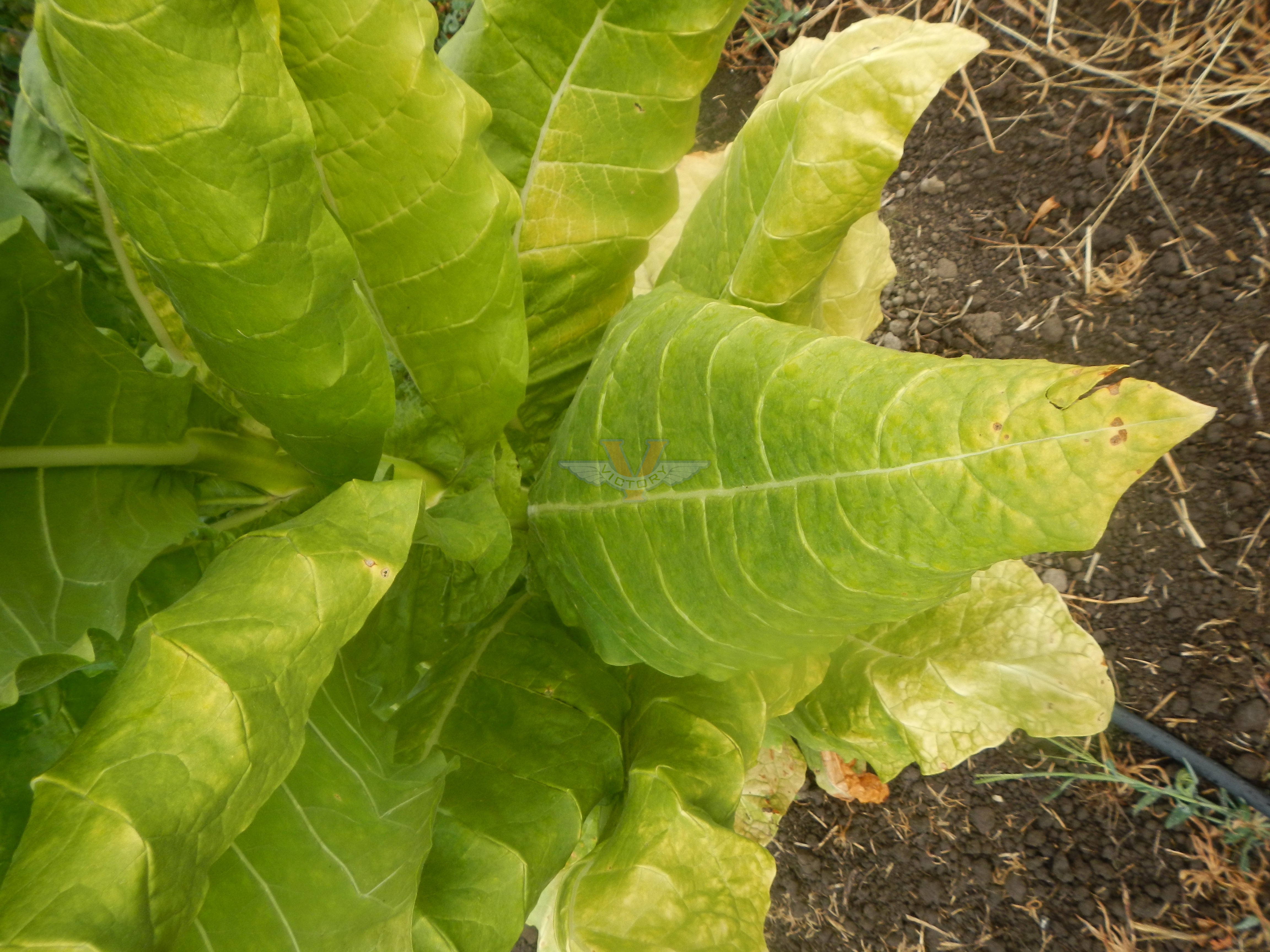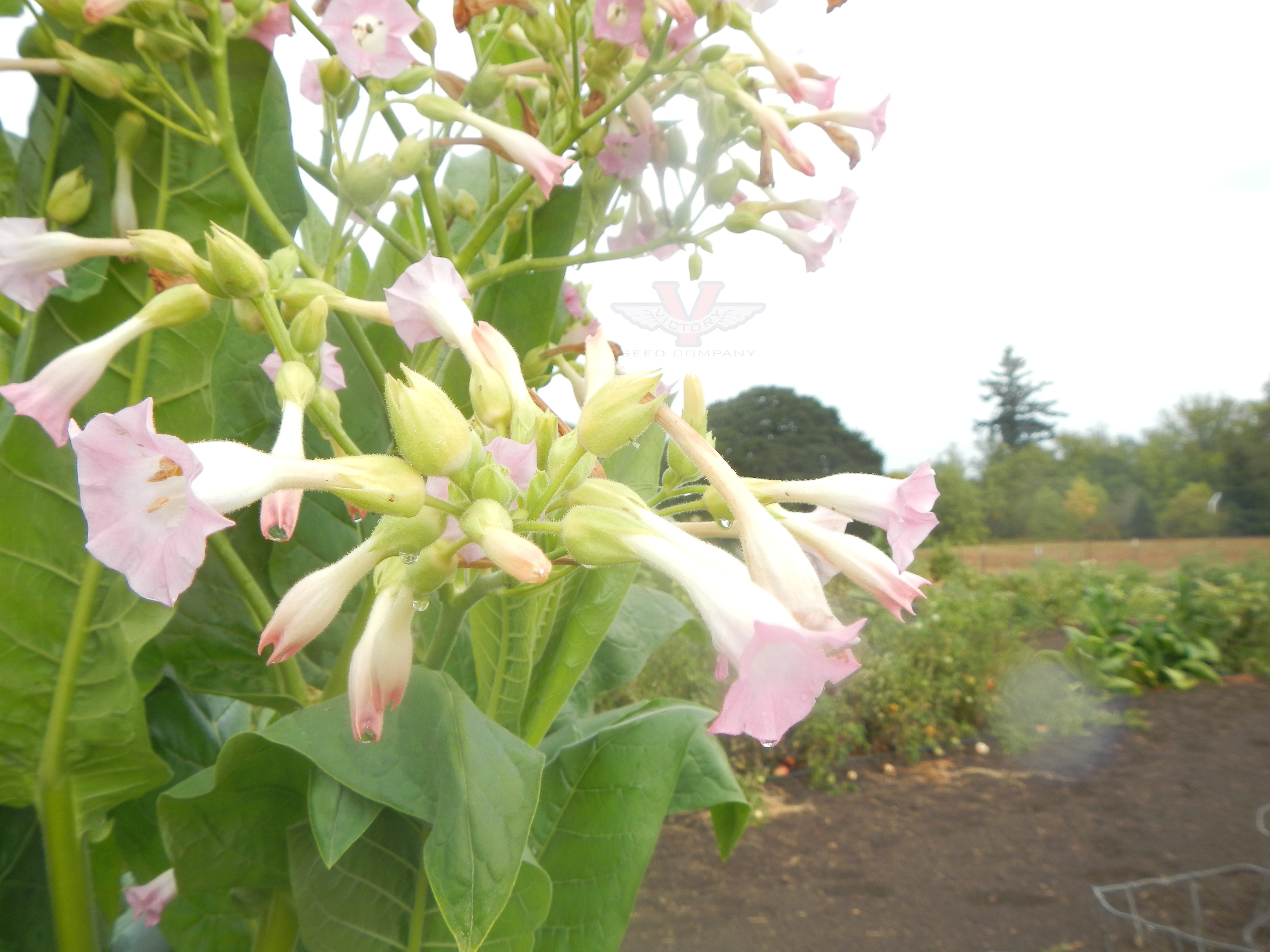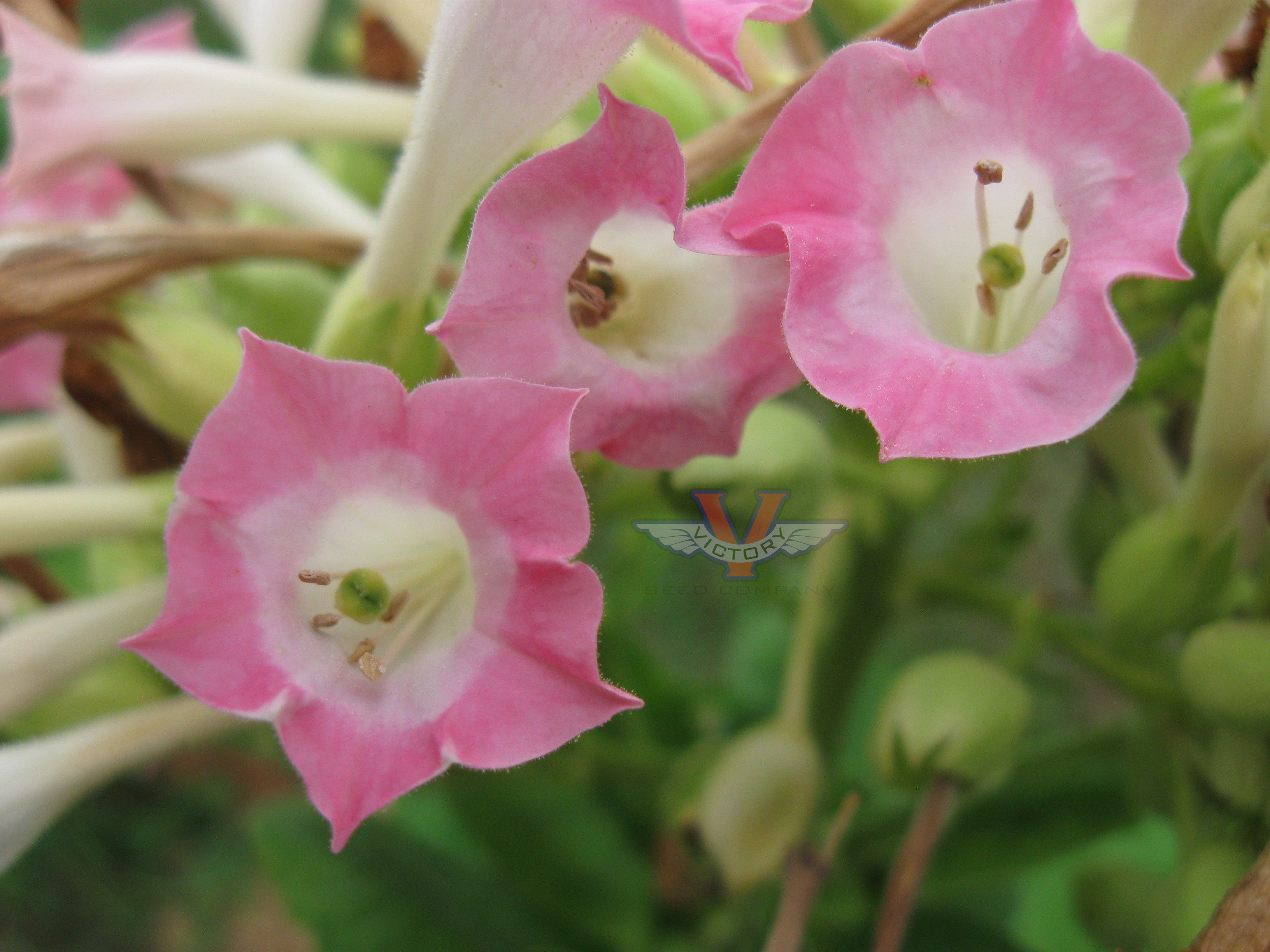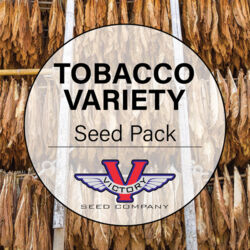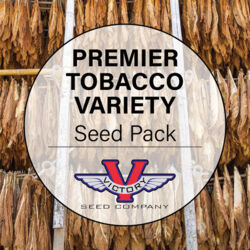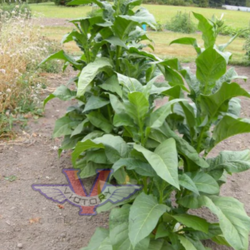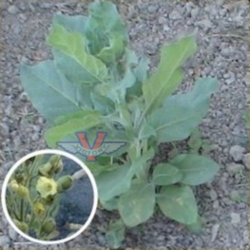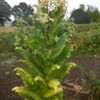
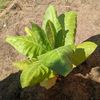
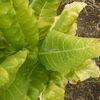


Burley 21 Tobacco
Price: $3.49
SKU: 1001771
Burley 21
Nicotiana tabacum L
[ Approximately 100 seeds per packet ]
Nicotiana tabacum L
[ Approximately 100 seeds per packet ]
As the first tobacco cultivar with resistance to wildfire bacteria, 'Burley 21' was an important development, taking many years and the cooperative work of public and private organizations to accomplish.[1,2] Classified as an "air-cured" Burley-type tobacco, 'Burley 21' grows five to six feet in height. Its leaves are large (eleven inches wide by twenty-six long), and historically used for cigarette and pipe tobacco blending. 'Burley 21' combines disease resistance with good standup tobacco-type; high quality, and high-yielding potential.
'Burley 21' was developed from a complex series of crosses and back-crosses[3] which included the species Nicotiana longiflora for its resistance to wildfire bacteria, and Nicotiana glutinosa for its resistance to tobacco mosaic virus of the local-lesion type. By the time that it was stabilized and released for planting in 1955, eight generations of selfing had been accomplished. Refer to the informational references tab for information on its development team.
Our seed was originally sent to us by David Pendergrass from Middle Tennessee and originated from USDA accession number PI 552363, which entered their collection in 1961.
Tobacco plants are very interesting, ornamental, and have many uses apart from consumption. Tobacco seeds are not classified as tobacco products. We promote the cultivation of tobacco plants, but we do not promote the use of tobacco products.
Tobacco seeds are tiny and look like dust, but each one has the potential to quickly grow into a huge tobacco plant. They need light to germinate. Sprinkle the seeds onto the surface of a moist and sterile seed starting mix. Do not cover the seeds. They also must never be allowed to dry out, so they are frequently (but gently) watered using a mist from a spray bottle. While waiting for germination, it can help to cover them with some kind of plastic sheeting to help hold moisture.
Once tiny seedlings emerge, you can pick them out one by one and move them into individual cells. Very lightly fertilize and never allow the potting soil to dry out. Within 6 weeks it'll be ready to plant in the garden. Wait until all risk of frost is over before planting outdoors.
For additional information, please have a look at our more detailed guide with photos.
Once tiny seedlings emerge, you can pick them out one by one and move them into individual cells. Very lightly fertilize and never allow the potting soil to dry out. Within 6 weeks it'll be ready to plant in the garden. Wait until all risk of frost is over before planting outdoors.
For additional information, please have a look at our more detailed guide with photos.
Informational References:
- "Development of BURLEY 21, the First Wildfire-resistant Tobacco Variety; Including results of variety trials," by, Howard E. Heggestad, E. E. Clayton, M. O. Neas, H. A. Skoog, Bulletin 321, December, 1960.
- The team of individuals and organizations involved in developing 'Burley 21' include, J. Hugh Felts, Superintendent of the Tobacco Experiment Station, Greeneville, Tennessee, who helped conduct the experimental work; D. R. Bowman and R. N. Jeffrey, Plant Physiologists, Crops Research Division, Agricultural Research Service, U. S. Department of Agriculture, Knoxville, Tennessee, and Beltsville, Maryland, respectively, for chemical analysis; the American Tobacco Company, the R. J. Reynolds Tobacco Company, and the Liggett & Myers Tobacco Company for quality determinations; the Tobacco Division, Agricultural Marketing Service, USDA, for grading the experimental lots of tobacco; Branch Tennessee Experiment Station superintendents and growers whose cooperation made the variety tests possible; and, to the personnel of the Extension Service who helped evaluate Burley 21.
- The parentage of 'Burley 21' includes the following varieties with backcrosses in the order shown: 'TL 106', 'Kentucky 16', 'Greeneville 5', 'Kentucky 41A', 'Kentucky 56' and 'Greeneville 18'.
Categories:
Customer Reviews:
No reviews have been posted yet.
